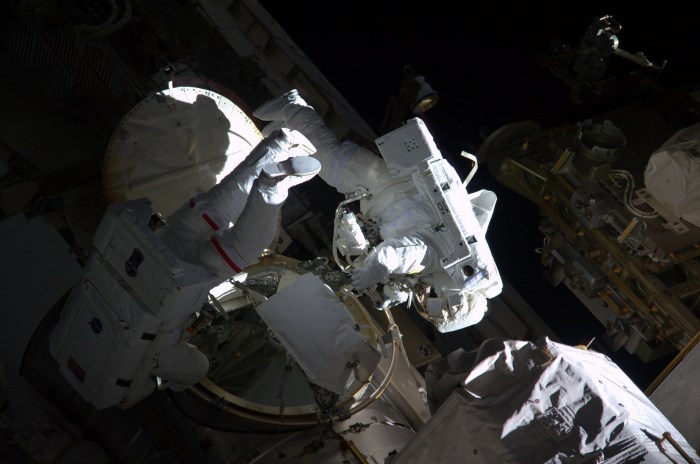A new study of six young, star-forming galaxies suggests they’re less influenced by dark matter than expected. But the results may say more about galaxy evolution than about the nature of dark matter.
When Rubin and Ford collected spectra of ionized hydrogen in Andromeda almost half a century ago, they measured the speed of 67 gas clouds as they whirled about the galaxy’s center with far greater precision than ever before. What the astronomers found was at the time quite curious: beyond 15,000 light-years or so from the galaxy’s center, the clouds’ velocities didn’t slow down — the outermost clouds whirled just as fast as those much closer to the center. Either Andromeda Galaxy was in the midst of flying apart (not likely) or there was some additional matter in the galaxy’s outer reaches that we just couldn’t see.
This groundbreaking result, though not the first to suggest the existence of dark matter, encouraged scientists to start taking the matter seriously. And even though physicists still struggle to detect dark matter particles in the lab, astronomers have had enormous success in supporting their existence.
Since Rubin and Ford’s 1970 publication, scientists have found multiple lines of evidence for dark matter, such as the rotations of galaxies within clusters, weak gravitational lensing, and incredibly large-scale computer simulations of the distribution of galaxies in the universe. These observations suggest that galaxies and even galaxy clusters are ensconced in gigantic, massive dark matter halos, which started coming together before the stars began to shine.
That’s why the six galaxies studied by Genzel’s team proved so surprising.
Like Rubin and Ford, Genzel’s team measured the motion of hydrogen gas clouds. Unlike Rubin and Ford, the new measurements showed that toward the edge of six massive, star-forming galaxies, the clouds did slow down. Averaged data from 97 other (fainter) galaxies show the same result.
That’s not to say there isn’t some dark matter there — just not as much as expected. The dark matter cushions these galaxies lounge in appear to be rather threadbare.






